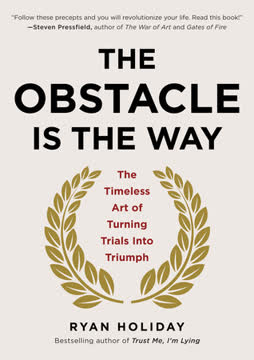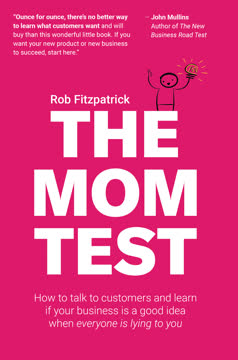Key Takeaways
1. B2B startups require a different approach than B2C
Enterprises don't purchase products like consumers.
B2B is complex. Unlike B2C, where consumer behavior can be more predictable, B2B sales involve multiple stakeholders, longer sales cycles, and higher stakes. Businesses buy based on ROI, not emotions. They require extensive relationship-building, deep industry knowledge, and solutions that address specific pain points.
Key differences:
- Multiple decision-makers (economic buyers, user buyers, technical buyers)
- Emphasis on ROI and hard benefits over soft benefits
- Longer sales cycles (often 6-18 months)
- Higher price points and more complex pricing models
- Need for deep industry expertise and credibility
To succeed in B2B, entrepreneurs must focus on understanding the target company's processes, pain points, and decision-making structure. This requires a more consultative approach, where the goal is to solve real business problems rather than creating a product and finding customers for it.
2. Find problems worth solving before developing solutions
Pet problems are, by definition, problems that only matter to one or a few stakeholders.
Problem-first approach. Successful B2B startups begin by identifying significant problems within their target market before developing solutions. This ensures that the product addresses a real need and has a higher chance of adoption.
Steps to find worthy problems:
- Conduct thorough market research
- Engage with potential customers to understand their pain points
- Analyze the competitive landscape
- Identify problems that align with your expertise and passion
- Prioritize problems based on frequency, intensity, and potential impact
By focusing on problems that matter to a significant portion of the market, entrepreneurs can avoid the trap of building solutions for "pet problems" that only affect a small number of potential customers. This approach also helps in creating a compelling value proposition and targeting the right decision-makers within organizations.
3. Identify and engage early adopters to validate your product
Early adopters generally share a curiosity for new technology and a willingness to exchange ideas on industry-changing trends.
Find your champions. Early adopters are crucial for B2B startups as they provide valuable feedback, serve as references, and can become advocates for your product. These innovators are more willing to take risks on new solutions and can help refine your product before approaching the mainstream market.
Strategies to engage early adopters:
- Leverage professional networks and industry events
- Use social media and content marketing to attract innovators
- Offer exclusive access or benefits for early users
- Provide a platform for them to showcase their thought leadership
- Build relationships based on mutual value and respect
Engaging early adopters not only helps validate your product but also provides social proof and case studies that can be crucial in convincing more risk-averse customers later on. Remember, in B2B, your first few customers can make or break your startup's reputation in the industry.
4. Build credibility and relationships in your target industry
Consciously or not, you come to think of the way that it operates as normal —you come to accept that things are the way they should be.
Become an insider. Credibility is currency in B2B sales. To succeed, entrepreneurs must establish themselves as trusted advisors within their target industry. This involves demonstrating deep knowledge, building a network of influencers, and consistently delivering value.
Ways to build credibility:
- Publish thought leadership content (blogs, whitepapers, case studies)
- Speak at industry conferences and events
- Collaborate with respected industry experts
- Showcase relevant experience and success stories
- Participate actively in industry associations and forums
Building credibility takes time, but it's essential for opening doors and shortening sales cycles. By becoming a recognized expert in your field, you'll be better positioned to understand industry challenges and propose innovative solutions that resonate with potential customers.
5. Create a Minimum Viable Product (MVP) to test with customers
Don't wait for a perfect product. An MVP with just a few screens will get prospects to fill the gaps more than a full-fledged application; prospects will do the work of imagining the rest of the solution.
Start lean, learn fast. An MVP allows B2B startups to validate their core value proposition without investing excessive time and resources in full product development. The goal is to create just enough functionality to solve the primary problem and gather meaningful feedback.
Key considerations for B2B MVPs:
- Focus on solving one core problem exceptionally well
- Prioritize features based on customer feedback and business impact
- Use rapid prototyping tools to create interactive demos
- Be prepared to iterate quickly based on customer insights
- Balance between minimalism and professional appearance
Remember that in B2B, your MVP might need to be more polished than a typical consumer MVP. Enterprise customers expect a certain level of quality and reliability, even in early-stage products. Use your MVP to demonstrate your understanding of the problem and your ability to execute a solution.
6. Conduct effective problem and solution interviews
To be successful, you have to shift the context to learning. In a learning context, the customer does most of the talking and you don't have to know all the answers.
Listen and learn. Effective customer interviews are crucial for validating your problem and solution hypotheses. The key is to approach these conversations with genuine curiosity and a desire to understand, rather than trying to sell.
Interview best practices:
- Prepare a structured interview guide, but remain flexible
- Ask open-ended questions to encourage detailed responses
- Focus on understanding the customer's processes and pain points
- Avoid pitching your solution prematurely
- Pay attention to non-verbal cues and emotional responses
- Document and analyze insights systematically
Problem interviews help you understand the depth and breadth of the issues facing your target market. Solution interviews allow you to validate your proposed approach and gather feedback on specific features or functionalities. Both types of interviews should be ongoing processes throughout your startup's journey.
7. Pivot strategically based on customer feedback
Pivot gradually and keep plowing. If your solution had few sales or low engagement, it's not true that people will freak out if you change features, solution or positioning.
Adapt intelligently. Pivoting is a natural part of the startup journey, especially in B2B where market needs can be complex and evolving. The key is to pivot based on validated learning, not on hunches or fear.
Types of pivots to consider:
- Product feature pivot (zoom-in or zoom-out)
- Customer segment pivot
- Problem pivot (addressing a different pain point)
- Technology pivot
- Channel pivot (changing your sales or distribution strategy)
- Revenue model pivot
When pivoting, maintain transparency with your existing customers and early adopters. Explain the rationale behind the changes and how they will benefit from the new direction. Use pivots as opportunities to deepen customer relationships and demonstrate your commitment to solving their problems.
8. Overcome common B2B startup challenges
There's always an excuse to get in front of a customer and show something.
Anticipate obstacles. B2B startups face unique challenges that require strategic thinking and persistence to overcome. By anticipating these hurdles, entrepreneurs can develop proactive strategies to address them.
Common challenges and solutions:
- Long sales cycles: Build a robust sales pipeline and nurture relationships
- Complex decision-making processes: Map out stakeholders and tailor your approach
- Budget constraints: Demonstrate clear ROI and explore creative pricing models
- Resistance to change: Provide strong social proof and risk mitigation strategies
- Integration with existing systems: Prioritize interoperability and offer seamless onboarding
Remember that overcoming these challenges often requires a combination of patience, persistence, and creativity. Stay focused on delivering value to your customers and continuously refine your approach based on market feedback.
9. Accelerate product-market fit validation
Always be willing to stretch the system in order to survive.
Optimize for speed. While B2B sales cycles can be long, there are strategies to accelerate the product-market fit validation process. The goal is to gather high-quality feedback and iterate quickly without compromising the depth of customer relationships.
Acceleration strategies:
- Create a customer advisory board for rapid feedback
- Leverage industry events and "watering holes" to meet multiple prospects
- Use free trials or freemium models to increase adoption and gather usage data
- Collaborate with industry influencers and analysts for credibility and insights
- Multi-track validation by testing multiple hypotheses simultaneously
- Embed team members within customer organizations for deep insights
By accelerating your learning and iteration cycles, you can reduce the time and resources needed to achieve product-market fit. However, always balance speed with the need to build lasting relationships and deliver value to your customers.
Last updated:
FAQ
What's "Lean B2B: Build Products Businesses Want" about?
- Focus on B2B Startups: The book is a guide for technology entrepreneurs looking to find and validate business opportunities within mid- to large-sized organizations.
- Challenges Addressed: It tackles common challenges such as acquiring domain expertise, building networks, and understanding the needs of the "whole product."
- Lean B2B Methodology: The book consolidates the best thinking around B2B customer development to help entrepreneurs quickly find traction in the enterprise.
- Case Studies and Insights: It includes over 20 case studies and insights from more than a hundred entrepreneurs to provide practical examples and advice.
Why should I read "Lean B2B: Build Products Businesses Want"?
- Practical Guidance: The book offers concrete, day-to-day techniques for B2B customer development, making it a practical guide for entrepreneurs.
- Focus on Real Problems: It emphasizes finding and solving real business problems, which is crucial for building a successful B2B startup.
- Avoid Common Pitfalls: The book helps identify and avoid common challenges faced by entrepreneurs, saving time and resources.
- Community and Resources: It encourages joining a community for ongoing support and updates on B2B customer development ideas.
What are the key takeaways of "Lean B2B: Build Products Businesses Want"?
- Market Assessment: Learn to assess market potential and find the right opportunity for your team.
- Early Adopters: Discover how to find early adopters and establish credibility with business stakeholders.
- Problem Identification: Understand how to find and prioritize business problems and identify key stakeholders.
- Product-Market Fit: Learn to create a minimum viable product, validate solutions, and evaluate product-market fit.
What is the Lean B2B methodology?
- Customer-Centric Approach: The methodology focuses on understanding the market before finding a product or solution, prioritizing customer needs.
- Iterative Process: It involves a cycle of validation through problem and solution interviews, allowing for continuous learning and adaptation.
- Focus on Relationships: Building deep relationships with a small number of companies is emphasized as crucial for long-term success.
- Risk Reduction: The approach aims to reduce risk by validating the riskiest parts of the business model first.
How does "Lean B2B" differ from "Lean Startup"?
- B2B Focus: While Lean Startup is more consumer-focused, Lean B2B is tailored specifically for business-to-business contexts.
- Relationship Building: Lean B2B emphasizes building relationships and understanding complex sales involving multiple stakeholders.
- Market Understanding: It stresses the importance of understanding the market and customer needs before developing a product.
- Practical Techniques: Lean B2B provides specific techniques and case studies relevant to B2B startups, which are not covered in Lean Startup.
What are the best quotes from "Lean B2B" and what do they mean?
- "The goal of a startup is not to be a startup." This quote emphasizes that a startup is a temporary organization designed to find a scalable business model.
- "You’re the little guy armed with sticks and stones trying to hit a giant between the eyes." This illustrates the challenge of selling to large enterprises as a small startup.
- "Problems worth solving are typically invisible from the outside." It highlights the importance of getting inside the enterprise to understand real business problems.
- "Your solution must be at least two times faster, two times better and two times cheaper than the known alternatives." This underscores the need for a compelling value proposition to overcome the status quo.
How do you find early adopters according to "Lean B2B"?
- Network Leverage: Start with your personal network and seek introductions to potential early adopters.
- Social Media and Events: Use social media and attend industry events to identify and connect with early adopters.
- Ideal Customer Profile: Create an ideal customer profile to target the right early adopters who can become advocates.
- Influence and Visibility: Prioritize early adopters with influence and visibility in their industry for maximum impact.
What is a Minimum Viable Product (MVP) in the context of "Lean B2B"?
- Purpose of MVP: An MVP is the simplest version of a product that allows a team to collect the maximum amount of validated learning about customers.
- Desirability and Impact: It should be desirable and focus on the core features that solve the customer's problem.
- Validation Tool: The MVP is used to test hypotheses and gather feedback to refine the product.
- Iterative Development: It allows for iterative development, where the product is continuously improved based on customer feedback.
How does "Lean B2B" suggest handling long sales cycles?
- Plan for Longevity: Expect long sales cycles and plan for a long runway to sustain the business.
- Build a Sales Funnel: Consistently have new leads in the pipeline to ensure continuous growth.
- Create Momentum: Use case studies and customer success stories to build momentum and credibility.
- Optimize Processes: Focus on optimizing sales processes to reduce the perception of length and complexity.
What are common challenges in B2B startups according to "Lean B2B"?
- Being Everything: Trying to solve too many problems at once can dilute focus and effectiveness.
- Pet Problems: Avoid working on problems that only matter to a few stakeholders without broader market appeal.
- Long Sales Cycles: Be prepared for lengthy sales processes and plan accordingly.
- Insufficient Credibility: Build credibility through domain expertise, networking, and delivering results.
What is the role of case studies in "Lean B2B"?
- Credibility Building: Case studies serve as endorsements that build credibility and trust with potential customers.
- Market Validation: They validate the product's value and effectiveness in real-world scenarios.
- Sales Tool: Case studies are powerful sales tools that demonstrate ROI and customer satisfaction.
- Targeted Approach: Ensure case studies align with the target market to resonate with potential buyers.
How does "Lean B2B" recommend speeding up product-market validation?
- Find the Watering Hole: Identify where prospects gather and engage with them directly.
- Customer Development Panel: Recruit passionate prospects to guide product development and provide feedback.
- Leverage Experts: Work with industry experts to gain credibility and insights.
- Multi-Track Validation: Test multiple hypotheses or solutions simultaneously to accelerate learning.
Review Summary
Lean B2B receives mostly positive reviews, with an average rating of 4.20 out of 5. Readers praise its practical approach to applying lean methodology in B2B contexts, offering clear instructions and real-life examples. Many find it valuable for entrepreneurs and product managers in the B2B space. Some reviewers note that while it may not be groundbreaking, it effectively fills gaps left by other lean startup books. A few criticize it for being repetitive or lacking depth in certain areas, but overall, it's highly recommended for those in B2B startups.
Similar Books










Download PDF
Download EPUB
.epub digital book format is ideal for reading ebooks on phones, tablets, and e-readers.




